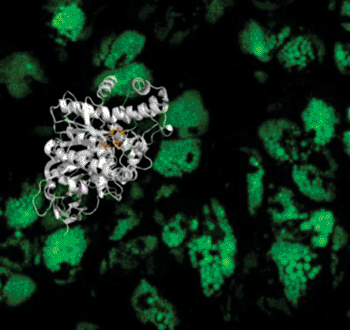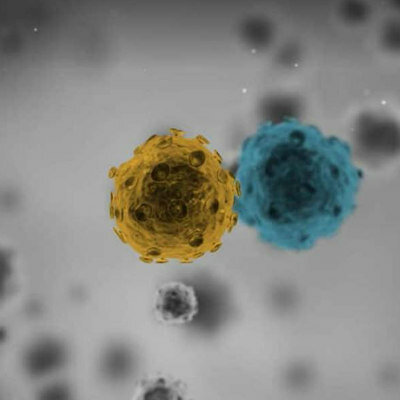Combination Drug Screening Strategy Identifies Obesity-Diabetes Treatment Target
By LabMedica International staff writers
Posted on 02 Jan 2014
A drug discovery strategy that combined phenotypic screening with a target-identification approach was used to identify a novel drug target that, when treated, relieved symptoms of metabolic disease in mouse models.Posted on 02 Jan 2014
Phenotypic screening, which tests candidate drug compounds for their ability to produce a desired effect directly on living cells, has largely been replaced by high throughput target-based screening, which assays candidate compounds against large numbers of biochemical reactions in microarrays. However, candidate drugs selected by target-based screening often fail when tested in cellular settings.

Image: As proof of the power of their new screening strategy, researchers at The Scripps Research Institute used the method to identify a compound that shows promise for treating obesity-linked diabetes. This image shows a structure identified as a target for obesity-diabetes (human Ces3), superimposed on a field of human fat cells with their lipids stained with a fluorescent dye (Photo courtesy of the Scripps Research Institute).
To improve chances of selecting successful drug candidates investigators at the Scripps Research Institute (La Jolla, CA, USA) have combined phenotypic screening of a directed small-molecule library with competitive activity-based protein profiling to map and functionally characterize the targets of screening hits.
They reported in the December 22, 2013, online edition of the journal Nature Chemical Biology that they had used this combined strategy to identify carboxylesterase 3 (Ces3) as a primary molecular target of bioactive compounds that promote lipid storage in adipocytes. Ces 3 was known previously to be a member of a large multigene family. The enzymes encoded by these genes had been shown to be responsible for the hydrolysis of ester- and amide-bond-containing drugs such as cocaine and heroin. They also hydrolyzed long-chain fatty acid esters and thioesters. The specific function of this enzyme had not yet been determined; however, it was speculated that carboxylesterases played a role in lipid metabolism and/or the blood–brain barrier system. The CES3 gene is expressed in several tissues, particularly in colon, trachea, and brain, and the protein participates in colon and neural drug metabolism.
The Scripps investigators reported that Ces3 activity was markedly elevated during adipocyte differentiation. They treated two mouse models of obesity-diabetes with a Ces3 inhibitor and found that this drug (WWL113) corrected multiple features of metabolic syndrome, illustrating the power of the described strategy to accelerate the identification and pharmacologic validation of new therapeutic targets.
"In recent years, compounds selected with target-based in vitro tests have seemed to be failing increasingly often when tested in the more realistic biological environments of cells and animals. This integrated strategy we have developed has the potential to accelerate the discovery of important biological pathways and may lead to faster development of new drugs for multiple diseases," said Dr. Enrique Saez, associate professor of chemical physiology at The Scripps Research Institute.
"The [WWL113] treated animals showed resistance to weight gain—they were not putting on as much weight as the controls," said Dr. Saez. "Their blood biochemistry also was getting normalized; their glucose, triglyceride, and cholesterol levels were coming down towards normal levels."
Related Links:
The Scripps Research Institute














